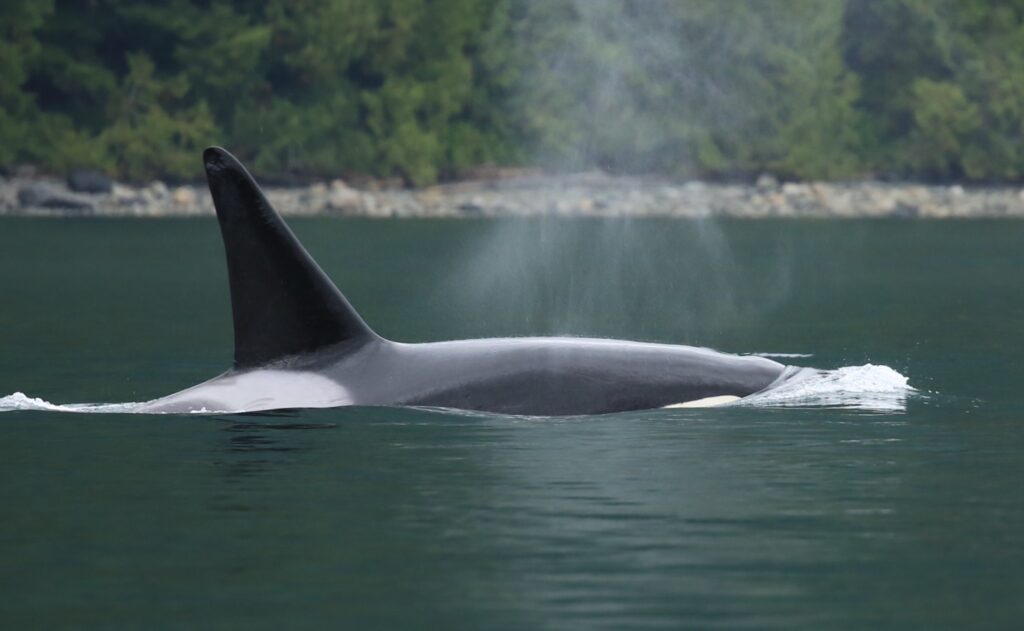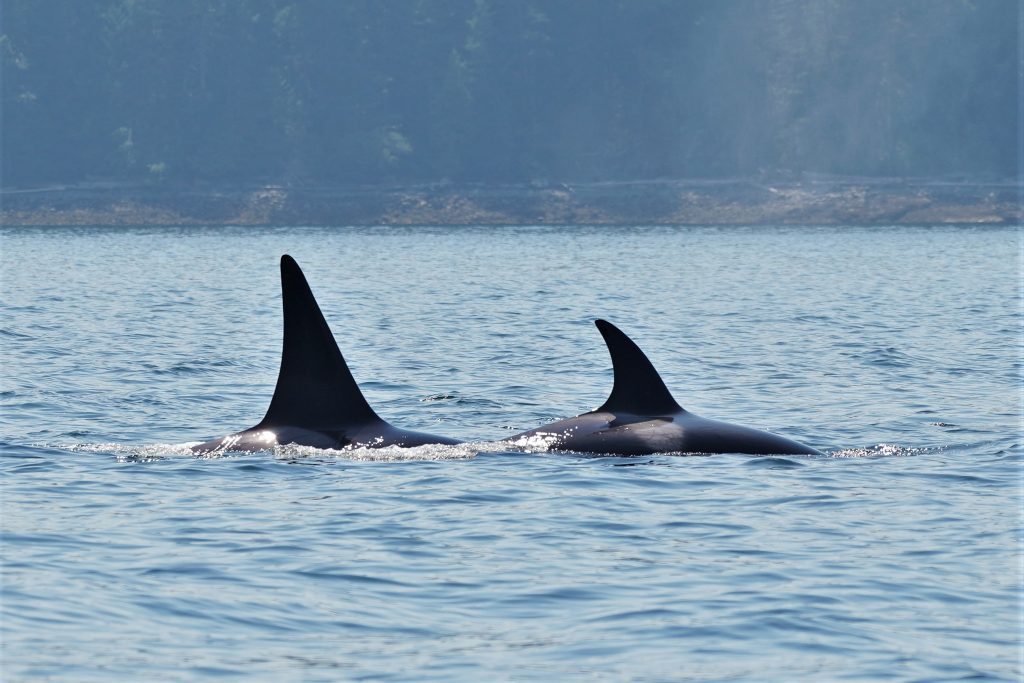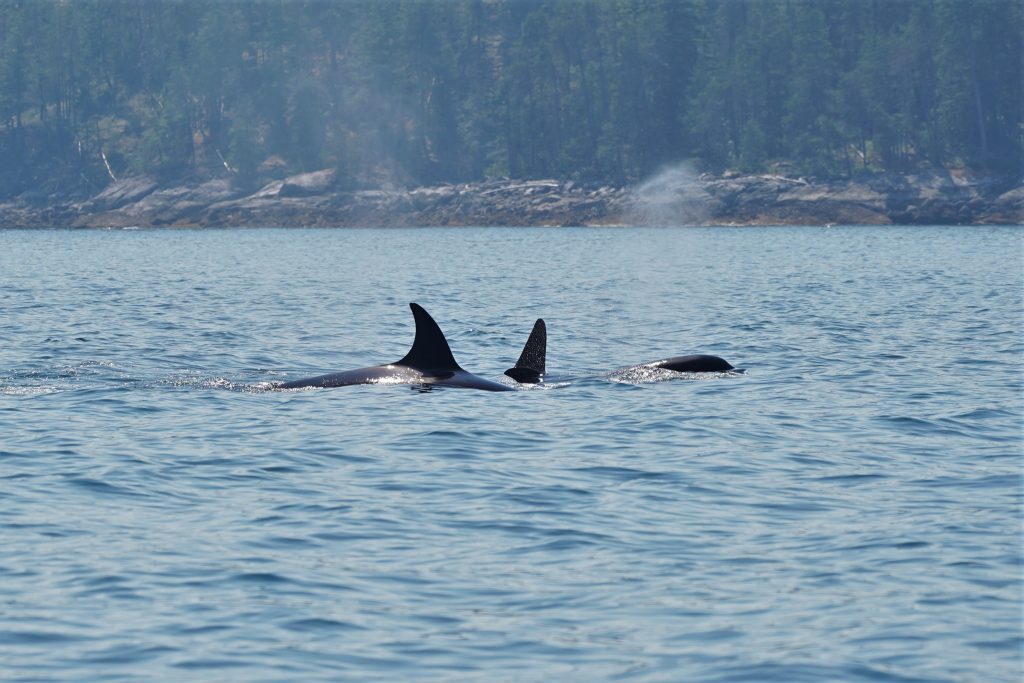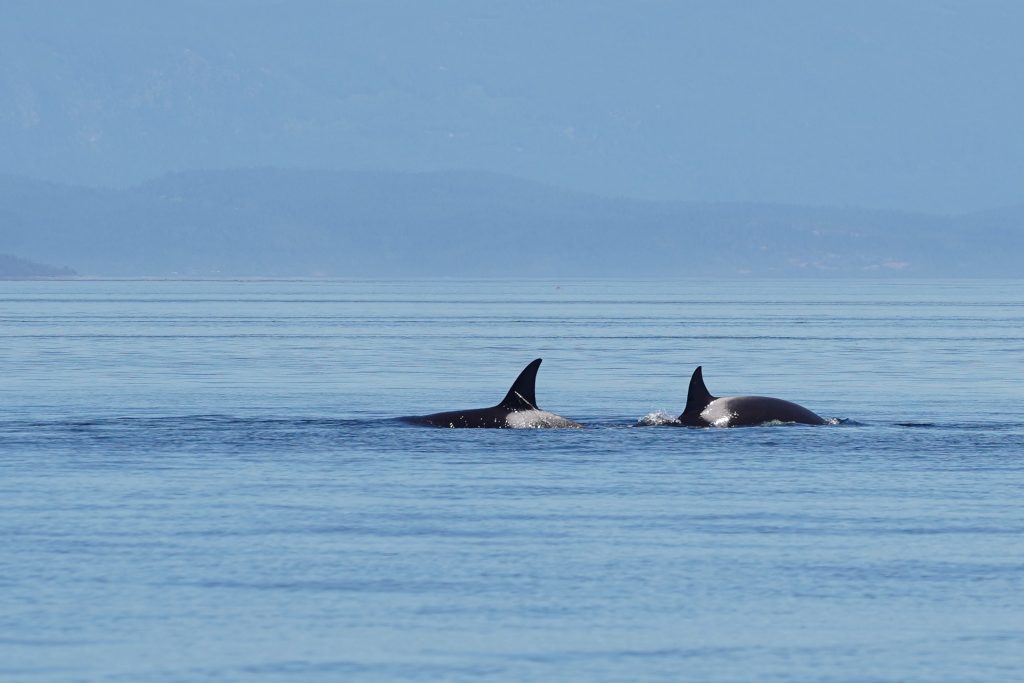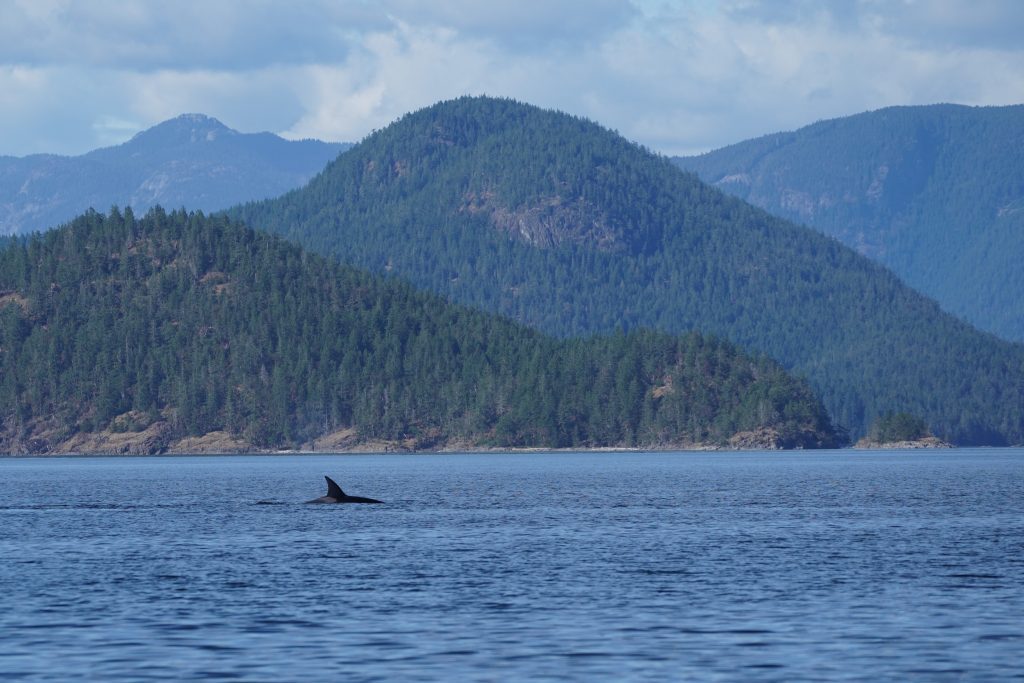Orca Whales
Latin name: Orcinus orca
Homalco (ayʔaǰuθɛm) Name: nənqam, pronounced [nan-kem]
Orca whales, also called killer whales are found in all the world’s oceans, from the tropics to the poles. They are wide-ranging but non-migratory and could be described as “wanderers,” often travelling more than 100km per day! The waters off Vancouver Island are home to 3 distinct types of Orca whales that can be seen at almost any time of year on our Campbell River whale watching tours.
Orcas are the largest member of the dolphin family and share their unique cone-shaped teeth. They have distinctive and unmistakable black and white colouring, including white eyespots, saddle patches, and ventral markings, making them easy to spot in the wild. Killer whales are sexually dimorphic, with males being distinctly larger than females. They sport tall, straight dorsal fins, large, curled flukes and exceptionally large pectoral fins. The largest killer whales in BC can reach nearly 8 meters in length and weigh as much as an estimated 6500 kg!
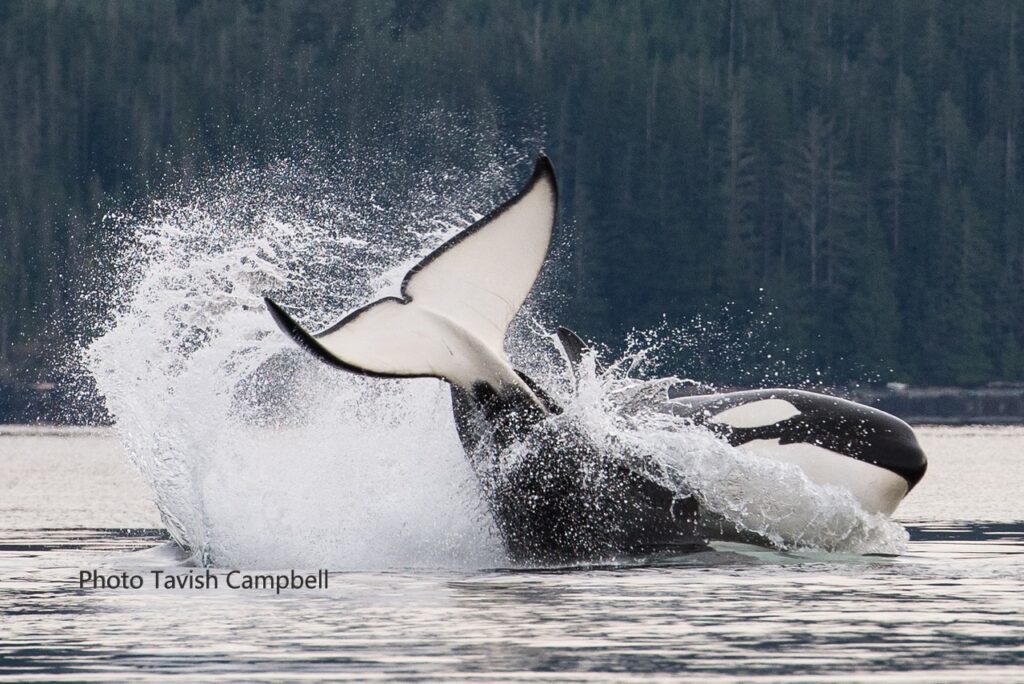
Three Types of Orca Whales
BC has three distinct ecotypes of orcas: Transient, Resident and Offshore. These ecotypes are differentiated primarily by diet, behaviour, and culture rather than their travelling habits or distribution. The habitat ranges of all three types of BC’s ecotypes of killer whales are large and overlap.
Transient Killer Whales
Transient Killer Whales, also known as Bigg’s Killer Whales, feed on marine mammals such as seals, sea lions, dolphins, porpoises and even other whales. Because Transients hunt marine mammals, they need to be quieter than other kinds of killer whales and so tend to vocalize less and travel in smaller groups. The Committee on the Status of Endangered Wildlife in Canada (COSEWIC) considers these whales threatened.
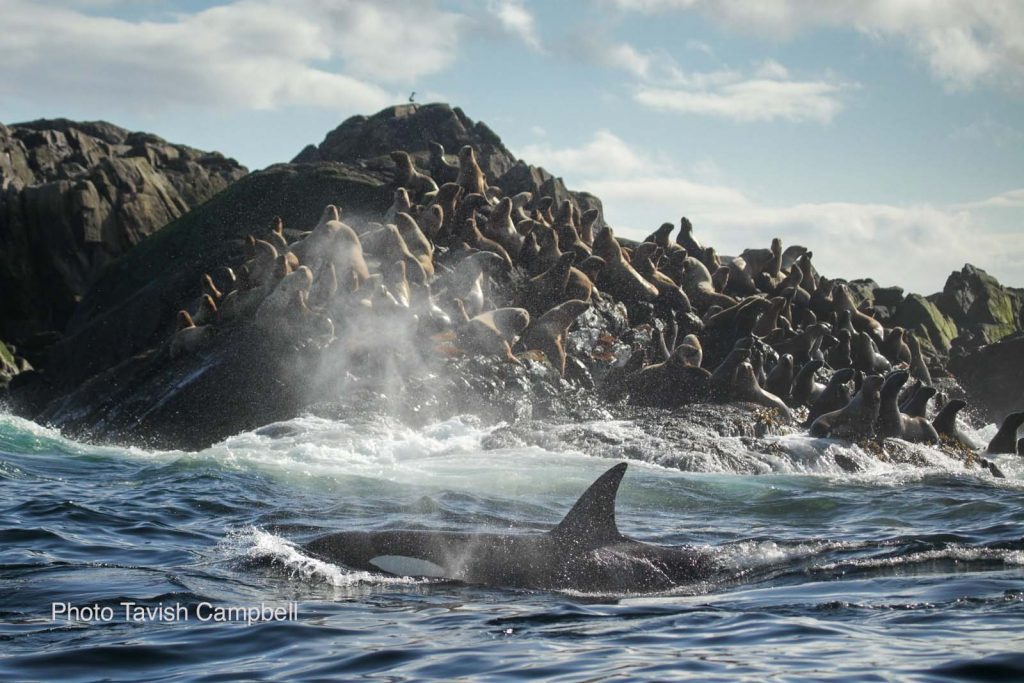
“A Biggs, or transient, killer whale belonging to the family group T55 circles a small island where up to 1000 Steller sea lions haul out to give birth and breed”
Southern Resident Killer Whales
Southern Resident Killer Whales specialize in hunting fish, primarily salmon, and especially chinook salmon. They are highly social and are well known for their large group sizes and surface-active behaviours. With a population size of fewer than 80 whales, they are considered endangered.
Northern Resident Killer Whales
Northern Resident Killer Whales are piscivorous and focus primarily on salmon hunting. They display a unique beach rubbing behaviour, where they swim along shallow pebble beaches and rub their bodies along the substrate. It may be a socially oriented behaviour and it is not seen in any other population of orca. COSEWIC considers these whales threatened.
Offshore Killer Whales
Offshore Killer Whales are thought to primarily feed on various species of sharks as well as a few other fish species. The rough skin of sharks wears down the teeth of Offshore Killer Whales until they are flush with the gumline.
The behaviour and social structure of Offshore Killer Whales are poorly understood; they are thought to live in relatively large groups and are known to occasionally gather into groups of over a hundred whales. COSEWIC considers these whales threatened.
Threats To Killer Whales and our Conservation Efforts
While some orca populations seem to be on the incline, they are still vulnerable. Primary threats to all 3 types of orcas include vessel disturbance, noise pollution, prey availability and pollutants.
Vessels pose a threat to all killer whales as they disturb important behaviours such as feeding, resting and socializing. Killer whales use sound for foraging, whether that be the echolocation of residents or the passive listening of transients, so noise pollution can be incredibly damaging.
Prey availability is a more dire threat to resident orcas, as salmon stocks are depleted. Pollutants, specifically persistent organic pollutants, may be more impactful for transient orcas, as they are feeding on mammals that are themselves highly polluted.
To combat some of these imminent threats to orcas, Homalco Wildlife & Cultural Tours contribute to the Homalco-Taggares Hatchery which protects and restores sensitive salmon habitat. We also are a member of the North Island Marine Mammal Stewardship Association (NIMMSA) which is committed to creating a positive balance between human activities and the health of the local marine ecosystem including that of orcas. Learn more about our conservation efforts.
